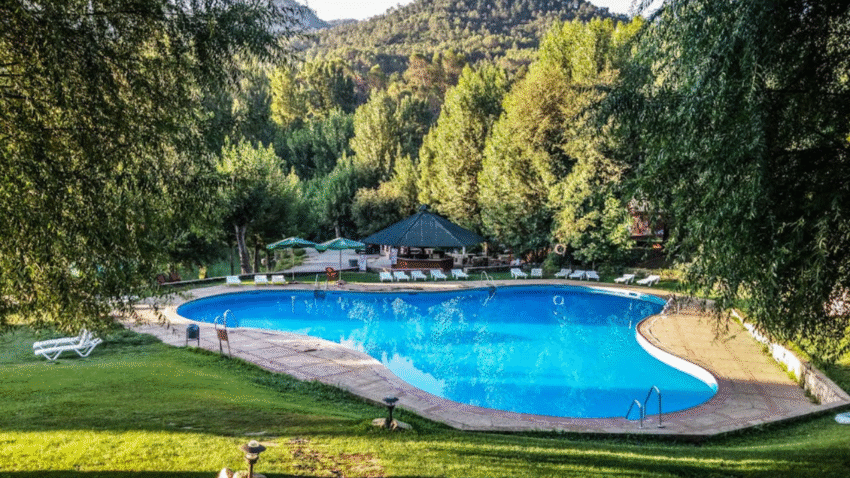Introduction
Noticed water pooling around your pool pump? A leaking pool pump can lead to serious problems if not addressed quickly—like water loss, higher energy bills, and even pump failure. In this step-by-step guide, you’ll learn how to fix a leaking pool pump, identify the source of the leak, and stop it before it causes major damage.
Why Fixing a Pool Pump Leak Matters
Your pool pump is the heart of your pool’s circulation system. When it leaks, it not only wastes water but also puts extra strain on your pump, filter, and other components. Ignoring a leak can result in:
- Reduced circulation and filtration
- Higher electricity and water bills
- Pump motor damage or burnout
- Costly replacements down the line
Addressing a leaking pump early helps you maintain water quality, extend equipment life, and save money on repairs.
Step-by-Step Guide to Fixing a Leaking Pool Pump
Step 1: Turn Off the Pool Pump and Power Supply
Before inspecting or repairing anything, turn off the pump and disconnect power at the breaker box. This keeps you safe from electrical shock and allows the pump to cool down.
⚠️ Safety First: Never work on a running pump or handle wet equipment near live electricity.
Step 2: Identify the Type of Leak
Pool pump leaks can occur in several places. Look closely to determine where the leak is coming from:
- Pump lid or O-ring
- Pump housing (volute)
- Pump drain plugs
- Suction-side pipe connections
- Discharge-side fittings
- Shaft seal between motor and wet end
Dry the pump area with a towel, run the pump briefly, and watch closely to spot the leak.
Step 3: Fix a Leaky Pump Lid or O-Ring
A very common leak comes from the pump lid due to a cracked O-ring or debris interfering with the seal.
To fix:
- Remove the pump lid.
- Take out the O-ring and inspect it for cracks or flattening.
- Clean the lid, O-ring groove, and the O-ring itself.
- Lubricate the O-ring with pool-safe silicone lubricant.
- Replace the O-ring if damaged or worn out.
- Reinstall the lid and hand-tighten.
Tip: Always check the manufacturer’s specifications before replacing parts.
Step 4: Tighten or Replace Drain Plugs
Many pool pumps have one or two drain plugs near the bottom of the housing. These can leak if loose or if the O-rings are worn.
To fix:
- Check that the plugs are tightened securely (hand-tighten only).
- Remove and inspect the plug O-rings.
- Replace any cracked or flattened O-rings.
- Reapply a small amount of silicone lubricant before reinserting.
Pro Tip: Always replace both plugs at once if you suspect a leak in that area.
Step 5: Check and Repair Pipe Connections
Leaks at pipe connections (inlet or outlet) are typically caused by loose fittings or cracked plumbing joints.
To fix:
- Inspect where the PVC pipes connect to the pump.
- Tighten threaded unions or compression fittings if loose.
- If you see cracks or leaks at glued joints, you may need to cut and re-glue the fitting using pool-grade PVC cement and primer.
Caution: Let glue cure for at least 24 hours before restarting the pump.
Step 6: Replace a Worn Pump Shaft Seal
If you see water dripping between the motor and pump housing, the shaft seal is likely the problem. This seal keeps water from entering the motor and must be replaced immediately to avoid burnout.
To fix:
- Disconnect the motor from the pump.
- Remove the impeller and diffuser to access the seal.
- Carefully remove the old shaft seal.
- Install a new seal set—make sure it matches your pump model.
- Reassemble the pump, ensuring all gaskets and seals are lubricated and properly seated.
Tip: This job takes about 1–2 hours and is often easier with a pump seal repair kit.
Step 7: Test the Pump After Repairs
Once you’ve completed your repair:
- Reconnect all components and restore power to the pump.
- Turn on the pump and observe the system for at least 10–15 minutes.
- Check for any new or persistent leaks around fittings, seals, or the pump body.
- Re-tighten or adjust components if needed.
Tip: Place a dry towel under the pump when restarting—it helps spot small drips quickly.
Common Mistakes to Avoid
- Using Petroleum-Based Lubricants
- These can degrade rubber seals over time.
- Solution: Only use silicone-based, pool-safe lubricant.
- Over-Tightening Fittings
- Can crack plastic housings or strip threads.
- Solution: Hand-tighten and use thread sealant if needed.
- Skipping the Shaft Seal
- A worn shaft seal can destroy your motor.
- Solution: Replace the seal at the first sign of leakage near the motor.
- Ignoring Minor Leaks
- Small leaks can become major problems quickly.
- Solution: Inspect your pump weekly and fix leaks immediately.
- Not Matching Replacement Parts
- The wrong O-ring or seal won’t stop the leak.
- Solution: Always use parts specific to your pump make and model.
Extra Tips & Pool Hacks
- Keep a seal and O-ring kit on hand: These are inexpensive and allow for fast repairs.
- Use thread sealant tape on threaded fittings: This helps prevent future leaks without over-tightening.
- Install unions on pump plumbing: Makes future repairs and replacements much easier.
🧰 Need help with other pool gear? Check out our guide on how to replace a pool filter for another essential DIY tutorial.
Conclusion
Fixing a leaking pool pump doesn’t have to be complicated. By identifying the source, replacing worn seals, tightening connections, and performing regular maintenance, you can stop leaks and extend the life of your pump. Most repairs can be done in under an hour with basic tools—and a little patience.
💡 Final Tip: Regularly inspect your pump area for moisture—it’s the easiest way to catch small leaks before they turn into big ones!
